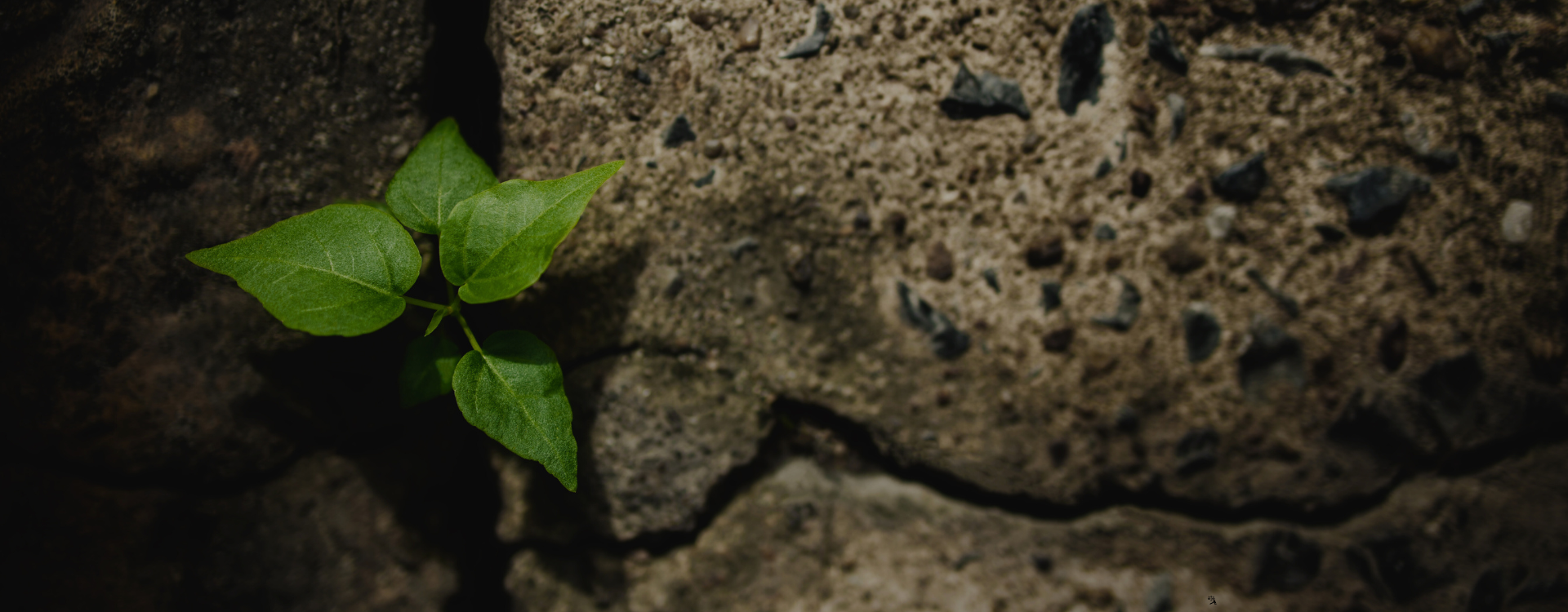In this special episode of “Real Talk”: Lowenstein’s Women’s Initiative Network podcast, host Megan Monson is joined by co-host Lowenstein Tech Group counsel Diane Moss and special guest Sheila Bridges, founder of Sheila Bridges Design and Sheila Bridges Home. With a client list that has included luminaries like former President Bill Clinton and Vice President Kamala Harris, and celebrities such as Sean Combs, Sheila has been named America’s Best Interior Designer by Time magazine and CNN, and has been inducted into the AD100, Architectural Digest’s list of esteemed designers and architects from around the globe for the past three years. She discusses her career trajectory, and how she leveraged her passion for design and storytelling to create and grow the lifestyle brand Harlem Toile, which has been featured in museums across the country and which partners with brands like Converse, Sonos, and the Shade Store to bring this joyful iteration of African American culture to a broad range of products and audiences.
Speakers:
Megan Monson, Partner, Employee Benefits & Executive Compensation
Diane Moss, Counsel, Emerging Companies & Venture Capital (fka, The Tech Group)
Sheila Bridges, Sheila Bridges Design and Sheila Bridges Home
Subscribe to Lowenstein Sandler’s Women's Initiative Network Podcast: Real Talk via Amazon Music, Audible, Apple Podcasts/iTunes, Google Podcasts, SoundCloud, Spotify, and YouTube.
READ THE TRANSCRIPT
Megan Monson: Welcome to another episode of the Women's Initiative Network: Real Talk. I'm one of your hosts, Megan Monson, Partner in Lowenstein Sandler's Employee Benefits & Executive Compensation Practice Group.
Diane Moss: I'm Diane Moss, Megan's colleague, and Counsel in Emerging Companies & Venture Capital (fka, The Tech Group) at Lowenstein, delighted to co-host this segment with Megan.
Megan Monson: Today's episode is going to expand upon many of our previous discussions, and in honor of Black History Month, highlight and celebrate successful women of color in our community. We're proud to be joined by Sheila Bridges, an interior designer who founded her own firm, Sheila Bridges Designing, and successfully launched her eponymous brand, Sheila Bridges Home. Thank you so much Sheila for joining us today.
Sheila Bridges: Thank you for having me.
Diane Moss: Sheila, I'd also like to welcome you. Thank you for being with us today. Sheila, it's safe to say you're not just a creative visionary, but a master of entrepreneurship and business as well. Some of the accomplishments we'd like to highlight are that you were inducted into the AD100 for the past three years. Now this is a list of esteemed designers and architects from around the world that Architectural Digest comprises. Sheila, do you know if there are other African American women who've been inducted for three consecutive years?
Sheila Bridges: Yes, I think so. There are a few African American designers on the list. I'm not sure how many, but it's a handful, and it's an honor to be included.
Diane Moss: And it's global, so it's not just domestic, so it's a great honor. You've also been named Best Designer by both CNN and Time Magazine. You've designed homes for a host of celebrities, influential business people and politicians. I know you designed Bill Clinton's Harlem office. And I read this morning actually that you were named Best Designer by both Time and CNN Magazines and I read this morning in the Washington Post that you designed Vice President Kamala Harris's residence.
Showing your range, your work includes spaces for prestigious Princeton and Columbia universities, you've published two books, Furnishing Forward and The Bald Mermaid: A Memoir, which I've heard will be brought to the silver screen. Sheila, we want to hear a bit about your journey in successfully starting your own business and making history in the design world. Can you tell us a bit about your professional evolution? Obviously, you started with some initial jobs at design firms. Have there been any particular lessons or experiences, sources of information that stayed at the top of your mind as you were launching your own business?
Sheila Bridges: Well, that's a lot, so let's see where to begin. Let's start at the beginning. When I graduated from Brown, my first job was at Bloomingdale's. I was in their management training program to become a fashion buyer, and I spent a year at Bloomingdale's and I hated my job. I really did not enjoy the work that I was doing, and I went back to school, Parsons School of Design, and I got a job working for an architectural firm. And do you remember when we used to look for jobs, they were listed in the classifieds, and so-
Diane Moss: [cross-talk]
Sheila Bridges: ... yes, in the New York Times. So there was an ad in the New York Times for a small prestigious architectural firm seeks, I think administrative assistant. So I ended up getting this job for this architectural firm, and that's really, I think, what started my career in design. I worked for a few firms before starting my own business. And I guess I always felt as though I was someone who worked really hard, even when I was working for other people. And I just kept thinking, if I'm going to work this hard, maybe I should work this hard for myself instead of for someone else. And so eventually, I got one client and that was enough to sort of jump ship, and I started my own firm.
Megan Monson: So from there, can you tell us a little bit about not only starting but growing your business? I mean, obviously where you've gotten today, you're very successful, you've had a few irons in the fire, your client-related design creations, on airtime at the Today Show, and then hosting your own show for four seasons on Fine Living. So how did you evolve from having that one client to where you are today?
Sheila Bridges: Well, I think the biggest thing is that I've always been really passionate about design. I love design, and so I was never interested in growing my business to be the biggest firm, and just designing residences, or doing hospitality design. I was always interested in design in kind of a fluid way. I've always been interested in fashion, in graphics, in music, in technology and all those things.
So one of the great things about design is that design is connected no matter what type of design it is. And so it allowed me to explore these other areas that I was interested in. The other thing is that for me, because I wasn't making a lot of money when I started out in design, is that it was just important to diversify my business so that I had different income streams. And if I couldn't rely on money coming in from a design client, perhaps it was a royalty on a book sales, or from my television show. So as long as it was about design, I was interested in trying it, or in experimenting and building my business that way as opposed to just growing in numbers.
Diane Moss: Did you enjoy your on-air time? Is that something that you'd like to get back to, or do you see yourself still in the creation of homes and designing homes?
Sheila Bridges: Well, I think it was just a lot of work, in retrospect. I was running a full-time design firm with a staff. I had an office at the production company that produced my television show with a staff, and I felt as though I was being pulled in a lot of different directions. So I really enjoyed doing the show, but it was just a lot of work on top of my regular day job. So I think I have to recognize that I get bored sort of easily, and I think that's probably part of the reason why I've always had a lot of irons in the fire.
And I think the other thing is that people forget, we all love to learn, and that's one of the things I miss about being in school. And I think once you reach a certain age, people just assume that you're not really interested in learning something new. And part of the reason I've had all of these different careers within my career is because I'm interested in a lot of different things and it's stimulating for me to continue to learn, and to get better at my craft, I guess.
Diane Moss: Many people associate you with your Harlem Toile de Jouy a pattern which you designed that's clearly unique. It's been successful across various markets. It's recognized in the Smithsonian, Cooper Hewitt National Design Museum, its permanent collection, so it's part of history. Some of your other work is also represented in museums, such as The National Museum of African American History and Culture in Washington, and The Philadelphia Museum of Art. So how and why did you develop this iconic toile pattern? What inspired the images, and what's its connection to you and history? I mean, you talk about not being bored; not everybody can take a design pattern and have it be so impactful. Tell us about that, I think there's a lot there.
Sheila Bridges: As a designer, I really think of myself as a visual storyteller. And for those of us who are in design, we have to, typically, when you're working with clients, tell other people's stories through their interiors, and how we can help elevate their story and edit it. But designing textiles or patterns for wallpapers, for me, gives me the opportunity to share my own sort of personal or political beliefs or opinions, which I can't, of course, share or implement in a client's home. I've always traveled a lot to France. I've always loved toiles, and Toile de Jouy, but I had never been able to find one that really resonated enough to put on my own walls in my own home.
So like most designers, if you can't find something you like, you design it. And in 2006, I designed the first sort of iteration. It was a yellow wallpaper, and I designed it for my own kitchen. It was a hand screen print, and when it was being printed, the guy who owned the printing company said, "Wow, this is incredible. I've never seen anything like this before. Would you consider having this printed and selling it?" And initially I said no, because it was really just for me. I just felt as though people who looked like me were not represented in a lot of designs, particularly in toiles or Toile de Jouy, and that's really why I designed it.
I think it's been incredible In the last few years. The Brooklyn Museum and the Museum of African American History and Culture just accepted our Wedgewood Harlem Toile collection into the permanent collections of both of those museums. And the wallpaper has been featured in various museums throughout the United States, Canada, and Europe. And I think it's resonated for people, because it is about our culture. And there's a certain joy to, I think, the imagery and to the design that people enjoy looking at. It's the aspect of storytelling, which is very common to toiles, and when they were developed, that's very consistent. It was just that the stories that were being told, in most of the toiles that I was familiar with, didn't really reflect anybody like me.
Diane Moss: You have managed to leverage Harlem Toile not just through your client-based design work, but in a way that allows all of us to enjoy your products with this hallmark pattern in our homes. Tell us about some of the collaborations you have launched.
Sheila Bridges: Sure, I love collaborating with other brands. Harlem Toile is really a lifestyle brand, and I try to collaborate with partners, licensees who are similar to me in certain ways, or they are brands that I admire, or brands that I use. I think the reason it has been successful is because the collaborations are authentic. They're things that I use. So for instance, we have Sonos speakers. I have Sonos in my home for my stereo. Converse Chuck Taylors, I wear Chuck Taylors or wore Chuck Taylors before we got the toile on the sneakers. I have a collaboration with The Shade Store, so people are able to actually buy that pattern in roller shades, as well as draperies, or have Roman shades made for window treatment. And recently launched our collection with Wedgewood, last year in 2022. We have candles with L'or de Seraphine, which there are four different scents of candles, and we have some new and exciting things that are going to be released in 2023, can't say yet, but more things that I think people will enjoy as I continue to try to grow the brand.
Diane Moss: So one of the things that you mentioned, just to quickly find out, you mentioned your storytelling, it resonates culturally with a lot of people, but I see your products in everyone's home and your shades in everyone's home. So it is not just something that is identified with being African American or the African American culture, would you say, and that's why the products have been so successful?
Sheila Bridges: Well, I think that mainstream America has always embraced black culture, and you don't have to obviously be African American to appreciate it. People have always appreciated our music, our food, and our creative contributions. So I guess I look at this as similar to that, but it's rooted in African American culture.
Diane Moss: Thank you.
Megan Monson: So Sheila, you mentioned earlier that you've tried out all these different things in branching out your brand and focusing on design, to continue learning, to continue keeping it interesting. What do you envision as the next phase in your career or design path? I'm sure there's things you can't share, but if there are, where do you see yourself as your next challenge?
Sheila Bridges: I'm not really sure. I think as long as I'm enjoying design, which I do, it's my favorite thing in the world, and as long as I can keep learning, and growing, and doing different things under this big umbrella of design, that's as good as it gets.
Megan Monson: That is fantastic. And you've definitely done a lot of amazing things, and I know we're all excited to see what 2023 and beyond brings. So thank you so much for joining us on this special episode of the Women's Initiative Network: Real Talk. Again, I want to thank our guest host, Diane, and our special guest, Sheila, for joining us today. Just hearing about your journey and stories of how starting out and growing your business is really inspiring, and so we're really excited to share that with our listeners. We'll see you next time.
Amanda Cipriano: Thank you for listening to today's episode. Please subscribe to our podcast series at lowenstein.com/podcasts or find us on iTunes, Spotify, Pandora, Google Podcasts, and SoundCloud. Lowenstein Sandler podcast series is presented by Lowenstein Sandler and cannot be copied or rebroadcast without consent. The information provided is intended for a general audience. It is not legal advice or substitute for the advice of counsel. Prior results do not guarantee a similar outcome. The content reflects the personal views and opinions of the participants. No attorney client relationship is being created by this podcast and all rights are reserved.









